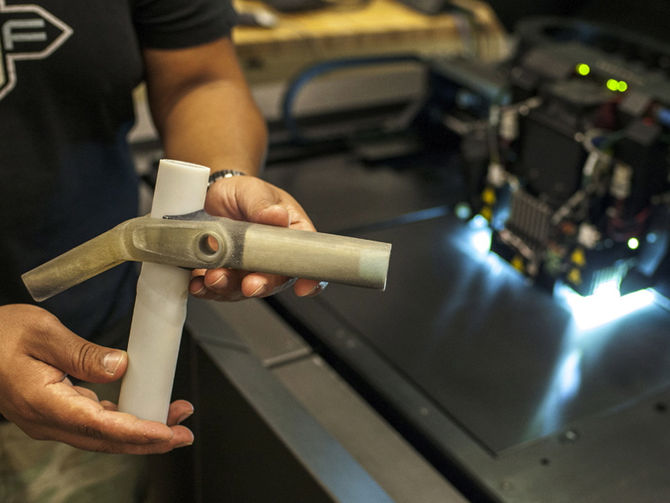One of the most exciting new technologies of the last few years is 3D Printing, a process where three dimensional objects of virtually any shape can be made from digital models. Unlike other forms of manufacturing which rely on removing material through cutting and drilling, 3D printing is an additive process, building objects layer by layer. While the first working 3D printer was built in 1984, it’s only in recent years that the technology has been refined, and made available for widespread use.
3D printing has a nearly limitless number of applications, and allows prototypes of new products to be created in a matter of hours. You can go from concept to prototype, obtain feedback, refine your design, and create another all in a day, and all in your design office. The cost of traditional prototyping and tooling become a thing of the past. Structures and shapes not easily made through subtraction manufacturing are suddenly possible. New combinations of materials can be used, and wasted product is virtually non-existant. Some of the largest companies in the world are investing billions in 3D printing (General Electric uses the technology to create parts for turbines), and it’s no different in the bicycle industry.
Charge Bikes is using 3D printing to create titanium dropouts for their cross frame, the Freezer. They use a process called Direct Metal Laser Sintering, or DMLS, which fuses together layer after layer of powdered titanium to create the solid object. Parts can be made lighter with hollow structures, a design impossible with CNC milling. The process is still fairly expensive, and with the printing, heat treatment, and polishing, it’s not quick either. As more companies see the advantages and experiment with the process, larger production runs and more demand will lead to lower costs. Could it be the future of bike part manufacturing?
Giant Bicycles is also using 3D printing on new saddle designs, not only for prototypes but in the creation of finished products. The Selective Laser Sintering (SLS) is similar to the process used by Charge, but utilizes powdered nylon to create prototype saddles that mimic very closely, the texture and density of the final product. Once they’ve refined the design, the final manufacturing is done using the oldest 3D printing method, Stereolithography (SLA). SLA starts with a vat of liquid resin, and the laser hardens the liquid layer by layer to build up the saddle.
Some bike manufacturers are using 3D printing to create models of full frame designs, and essentially complete bikes. While they aren’t rideable, they do allow designers to see what the bike will look like, and work out details like clearances and cable routing which can be difficult to verify on digital models alone.
If you’re thinking you might wait until the first 3D printed bike is available to upgrade your current steed, think again. Printing of nanoscale carbon composite is developing, but while materials and strength won’t be the issue, manufacturing on a large scale will be. 3D printing speeds up the design and prototyping phases exponentially, but the actual production is a lot slower than CNC or carbon molds. It could be decades before enough 3D printers are owned by manufacturing companies to produce thousands of anything in a timely manner.
But you never know what the future will hold.




